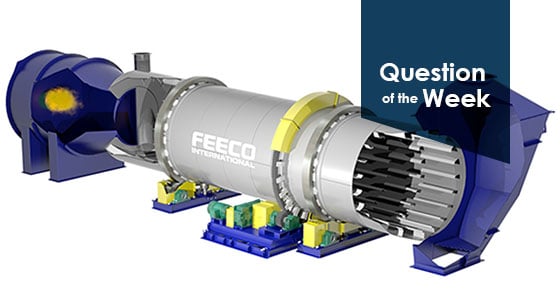Some materials come with limitations that will steer the rotary dryer design process in one direction or another. For example, with materials that have the potential for combustion in certain settings, a direct fired dryer would not be the ideal option; an indirect dryer should be used instead. Additional examples of how the material will affect the design process are listed below.
Consistency. Some materials, such as sludge-like or sticky materials, can stick to the dryer’s shell. This requires special attention to ensure efficient drying. A knocking system, for example, may be proposed during the design stage to help combat sticking and potential build-up.
Fragility. A material’s fragility should be considered when designing a rotary dryer. For example, some materials may be too fragile to withstand flights at the inlet of the dryer. A bald section, without flights, may be needed instead, to give the material a chance to harden before being introduced to the dropping action.
Use. The material’s end use should be considered during the design stage as well. Some materials, such as those that will be used by consumers, must remain sterile, and drying with an air stream would not be an option. In this situation, for example, an indirect dryer would be the better choice.
For additional information on rotary dryer design, download our e-book, or contact a FEECO expert today!


